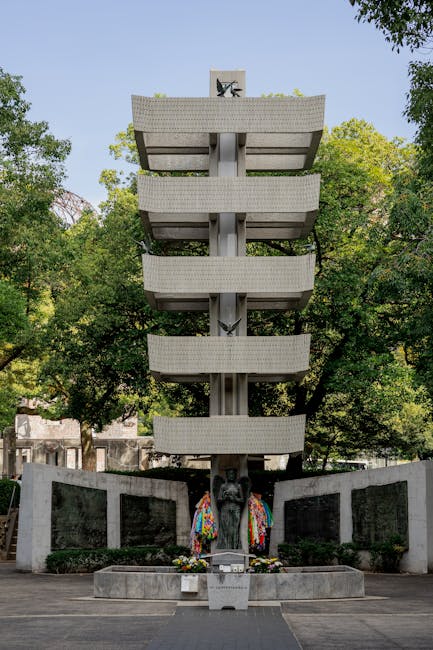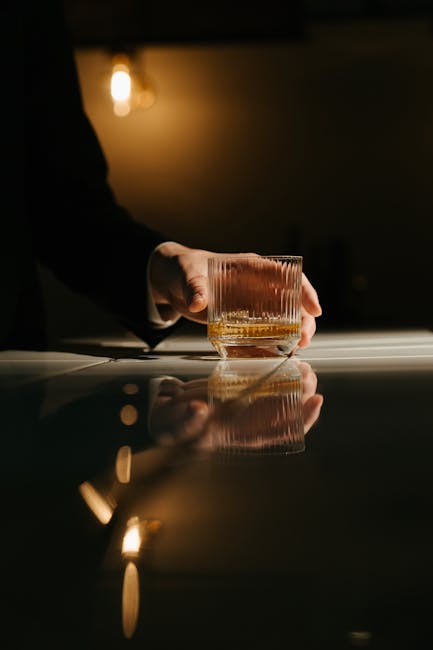Hiroshima & Miyajima: A Day of Reflection, Resilience, and Island Magic

Hiroshima & Miyajima: A Day of Reflection, Resilience, and Island Magic
Hey friends! Let me tell you about one of the most profound and beautiful day trips I've ever taken: Hiroshima and Miyajima Island in Japan. It's a journey that touches your heart, challenges your perspective, and leaves you in awe of the human spirit and the sheer beauty of nature. If you're planning a trip to Japan, especially if you're near Osaka or Kyoto, you absolutely MUST carve out time for this experience. It's more than just sightseeing; it's a chance to learn, reflect, and be moved.
Why Hiroshima and Miyajima?

Okay, so why these two places together? It might seem like an odd pairing at first glance. Hiroshima, sadly known for its devastating past, and Miyajima, a serene island famous for its iconic floating torii gate. But that's exactly the point! The combination creates a powerful contrast, showcasing both the depths of human suffering and the enduring strength and beauty that can emerge from even the darkest times. It's a reminder of the importance of peace, hope, and the resilience of the human spirit. It's a powerful combination you won't soon forget.
Planning Your Hiroshima & Miyajima Adventure

Before you jump on the Shinkansen (bullet train – more on that later!), let's get some logistical details sorted. Proper planning will make your day trip smooth and enjoyable.
Getting There: The Shinkansen is Your Friend
The fastest and most efficient way to get to Hiroshima from major cities like Osaka or Kyoto is by Shinkansen. You'll want to book a ticket on the Sanyo Shinkansen line. Here's a quick rundown:
- Purchase a Japan Rail Pass (if applicable): If you're planning extensive travel within Japan, a Japan Rail Pass can save you a lot of money. Do your research beforehand to see if it's cost-effective for your itinerary.
- Book your Shinkansen tickets: You can book your tickets online in advance, or at the train station. Reserving seats is highly recommended, especially during peak season.
- Arrive at the station early: Give yourself plenty of time to navigate the station, find your platform, and board the train.
The journey from Osaka to Hiroshima takes about 1.5 hours, and from Kyoto, it's closer to 2 hours. Sit back, relax, and enjoy the stunning views of the Japanese countryside whizzing by.
Getting Around Hiroshima
Once you arrive at Hiroshima Station, navigating the city is surprisingly easy. The main mode of transportation is the streetcar (tram). It's affordable, efficient, and covers all the major attractions.
- Purchase a day pass: For unlimited rides on the streetcar, a day pass is a great value.
- Learn the tram routes: The streetcar system is well-marked and easy to understand. Grab a map at the station or download one on your phone.
- Don't be afraid to walk: Hiroshima is a very walkable city, and exploring on foot allows you to discover hidden gems and soak in the atmosphere.
Miyajima Ferry: Setting Sail for Paradise
To reach Miyajima Island, you'll need to take a ferry from Miyajimaguchi, which is a short train ride from Hiroshima Station. There are two ferry companies: JR Ferry and Matsudai Kisen. If you have a Japan Rail Pass, the JR Ferry is covered. The ferry ride itself is short (around 10 minutes) and offers stunning views of the island and the iconic torii gate.
A Journey Through History: Hiroshima Peace Memorial Park

Our first stop is the Hiroshima Peace Memorial Park. This isn't just a park; it's a deeply moving and important space dedicated to remembering the victims of the atomic bombing and promoting peace. Walking through the park, you can feel the weight of history and the immense loss that occurred here.
The park is home to several key monuments and memorials:
- The Hiroshima Peace Memorial Museum: This museum is a must-see. It presents a powerful and unflinching account of the events leading up to the bombing, the devastating impact on the city and its people, and the ongoing efforts for peace. Be prepared – it's an emotional experience, but an incredibly important one.
- The Atomic Bomb Dome (Genbaku Dome): This skeletal ruin is the most iconic symbol of the bombing. It's a stark reminder of the destruction and a testament to the enduring power of memory.
- The Children's Peace Monument: Inspired by Sadako Sasaki, a young girl who died from radiation-induced leukemia, this monument is adorned with thousands of paper cranes folded by people around the world, symbolizing hope for peace.
- The Peace Memorial Cenotaph: This arch-shaped monument contains the names of all known victims of the atomic bombing. An inscription on the cenotaph reads: "Let all the souls here rest in peace; for we shall not repeat the evil."
Allow yourself plenty of time to explore the park and reflect on its significance. It's a somber experience, but it's crucial for understanding the history and the importance of striving for a world free of nuclear weapons.
Island Serenity: Miyajima and the Floating Torii Gate

After the emotional intensity of Hiroshima Peace Memorial Park, it's time to escape to the serene beauty of Miyajima Island. The ferry ride itself is a treat, offering breathtaking views of the island and its iconic floating torii gate.
The Great Torii Gate: A Symbol of Japan
The Great Torii Gate of Itsukushima Shrine is one of Japan's most recognizable landmarks. At high tide, it appears to float on the water, creating a magical and unforgettable sight. It's considered one of the three most scenic spots in Japan. Depending on the tide schedule, you might be lucky enough to see it both at high tide and low tide, offering two completely different perspectives.
Itsukushima Shrine: A Seaside Sanctuary
Itsukushima Shrine, a UNESCO World Heritage Site, is a stunning example of traditional Japanese architecture. The shrine buildings are built over the water, connected by boardwalks. You can stroll through the shrine, admiring the intricate details and enjoying the peaceful atmosphere. Be sure to keep an eye out for the friendly deer roaming freely on the island! They're considered sacred messengers of the gods.
Mount Misen: A Panoramic Paradise
For breathtaking panoramic views of Miyajima and the surrounding Seto Inland Sea, consider hiking to the summit of Mount Misen. There are several hiking trails of varying difficulty levels. Alternatively, you can take a ropeway (cable car) to the top, which is a much easier option. The views from the summit are simply spectacular, especially on a clear day.
Momiji Manju: A Sweet Treat
No trip to Miyajima is complete without trying Momiji Manju, a local specialty. These maple leaf-shaped cakes are filled with various sweet fillings, such as red bean paste, matcha, and chocolate. You can find them at numerous shops along the main street. They make a perfect snack while you explore the island.
Balancing Reflection and Enjoyment

One of the challenges of this day trip is balancing the somber reflection required at Hiroshima Peace Memorial Park with the lighthearted enjoyment of exploring Miyajima. It's important to allow yourself time to process the emotions you experience at the park before moving on to the island. Perhaps take a break for lunch or a quiet moment of contemplation.
Don't feel guilty about enjoying the beauty and serenity of Miyajima. It's a testament to the resilience of the human spirit and the enduring power of nature. It's a reminder that even in the face of tragedy, hope and beauty can still flourish.
Tips for a Smooth and Memorable Trip

Here are a few extra tips to help you make the most of your Hiroshima and Miyajima day trip:
- Check the tide schedule: The appearance of the floating torii gate is greatly affected by the tide. Check the tide schedule in advance to plan your visit accordingly.
- Wear comfortable shoes: You'll be doing a lot of walking, so comfortable shoes are essential.
- Bring snacks and drinks: While there are plenty of places to eat in both Hiroshima and Miyajima, it's always a good idea to bring some snacks and drinks, especially if you're planning to hike Mount Misen.
- Learn some basic Japanese phrases: While English is spoken in tourist areas, knowing a few basic Japanese phrases will be greatly appreciated by the locals.
- Be respectful: When visiting the Hiroshima Peace Memorial Park, remember that it's a place of remembrance and reflection. Be mindful of your behavior and avoid loud talking or inappropriate actions.
- Allow ample time: This is a full-day trip, so start early and allow yourself plenty of time to explore both Hiroshima and Miyajima. Rushing through the experience will only detract from its impact.
Final Thoughts: A Journey That Stays With You

My day trip to Hiroshima and Miyajima was a truly unforgettable experience. It was a journey that challenged me, moved me, and left me with a profound sense of hope and respect. It's a reminder of the importance of peace, the resilience of the human spirit, and the enduring beauty of the world around us.
If you're planning a trip to Japan, please don't miss the opportunity to visit Hiroshima and Miyajima. It's a day trip that will stay with you long after you've returned home. You'll not only see stunning scenery and historical sights, but also gain a deeper understanding of Japanese culture and history. It's an experience that touches the soul and broadens the mind, and I wholeheartedly recommend it to anyone seeking a meaningful and enriching travel experience. Safe travels, my friends!
Post a Comment